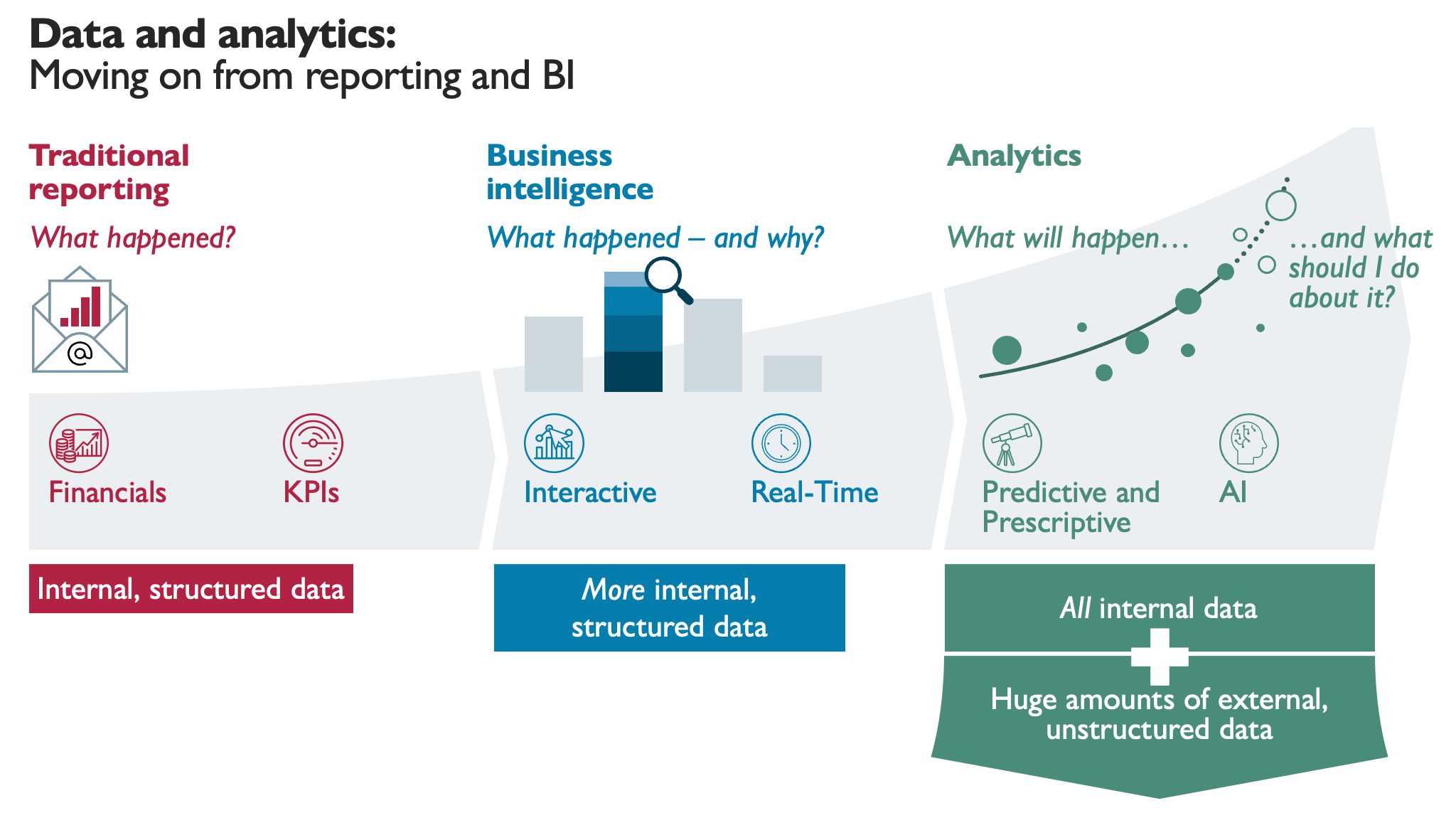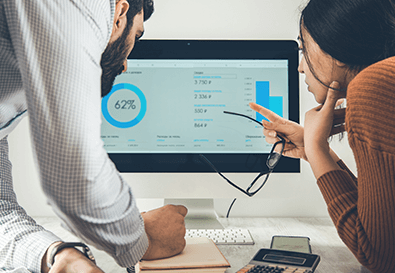We shed light on what data and analytics really involves, why it’s different from business intelligence and traditional reporting, and why your organisation may need to evolve.
Data and analytics: evolving from business intelligence and reporting
It’s always been important to use good information to understand what’s going on in your business and run it successfully. The idea of information isn’t new, but its nature, use and value has moved on a great deal.
Data and analytics is an evolution – a step on from business intelligence, which in turn evolved from traditional reporting.
Increasingly, information is seen as a competitive tool to drive growth, not just a necessary tool to control and sustain a well-run business.

Traditional reporting: pushing past information
Traditional reporting focuses on pushing information in fixed formats to defined audiences. Monthly finance reports are a classic example. The emphasis is on capture and control. It’s static, historic, and a matter of record. It’s essentially about the past: what’s happened.
Business intelligence: pulling information together
Business intelligence made static data more interactive. Fixed-format reports became interactive and online, with more ability to slice-and-dice, drill down and explore. Information became easier to digest with dashboards and other data visualisation techniques.
But the information was still essentially backward-looking, based on a defined area and amount of information, and typically sourced from internal systems.
Data and analytics: predictive information
Analytics looks not only backwards but also forwards: considering the future.
It often involves predictive models, showing future scenario options and forecasting the outcomes, to help you understand how best to drive your business forward. It is inherently dynamic, and its power and purpose lies in being a live operational and strategic tool, enabling you to use information far more effectively than ever before.
If traditional reporting is a rear-view mirror, analytics is a head-up display. It is front office and front of foot, with a strong bias to action – analysing what-ifs to identify therefores.
Moreover, the nature of the information is fundamentally different. It involves not only much larger volumes, but also greater variety – looking not just at your business but at your customers’ data, for example. The data sources are more disparate and, often, externally sourced. There may also be a great variety of unstructured data, such as social media.
Think you're ready to develop your data and analytics?
Data and analytics clearly offers many great opportunities across both strategy and operations. If you’re convinced by the advantages, and want to invest in your organisation’s data and analytics capability, your next step should be to consider the key challenges.
Learn more about the common barriers to effective data and analytics and how to overcome them.










